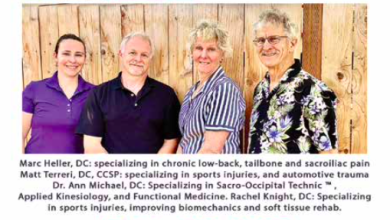Winter Whiplash
As I drove to work the other day after our recent snow, I saw a car that had skidded off the road and had nosed precariously into a drainage ditch. It was a stark reminder that even with a little snowy and icy weather, things can go bad quickly.
Here are some important safety points to keep in mind.
Raise the “headrest”!
I put headrest in quotes because that’s what most people call it. In fact, it’s not actually a headrest, but a head restraint. Its purpose is to keep your head from snapping backward in a collision. In order for this to work, the top of the restraint must come up at least to mid head level. Many people drive around with that thing in the lowest position. If you get hit from behind your head will simply snap backward over the top of that restraint (called the ramping effect) – so raise it up!
Incidentally, the closer your head is to the restraint while driving, the safer you are!
Avoid driving with your arms crossed over the steering wheel.
Driving with your arms uncrossed is a good idea. If your arms are crossed and your airbag goes off, you will get smacked in the face with your own arms. Most airbags deploy at 80 to 190 miles per hour!
Wear your seatbelt!
You can always google pictures if you need more convincing…
Keep loose items low in your car
They become projectiles in a crash.
If you do get into an accident, try to get over to the side of the road, call the police and exchange insurance information if other drivers are involved. Make sure to take pictures of the vehicles and any injuries you may have – bruises, cuts, etc. Studies show that symptoms may take a few days to appear, so give yourself a little time to let the adrenaline wear off and see how you feel. When in a crash, your body is being shoved, twisted and jerked in ways it wasn’t meant to move, so seemingly minor injuries can be significant. Remember motor vehicle collisions can cause significant injury even at low speeds.
Most vehicle accident injuries fall under the term Whiplash Associated Disorders (WAD). Some common ones are: neck, mid or low back strains and sprains, headaches and sciatica (pain down the leg).
If you think you are injured, be sure to be examined by your medical provider. He or she may also choose to order more tests based on your exam findings. Unfortunately, I usually see a lot of these cases this time of year. So, take care especially during our winter weather, and drive safely!
Matt Terreri, DC, CCSP is a sports chiropractor at Southern Oregon Sports & Spine as well as the official chiropractor for the SOU Raiders and a volunteer medical provider for the U.S. Olympics.



